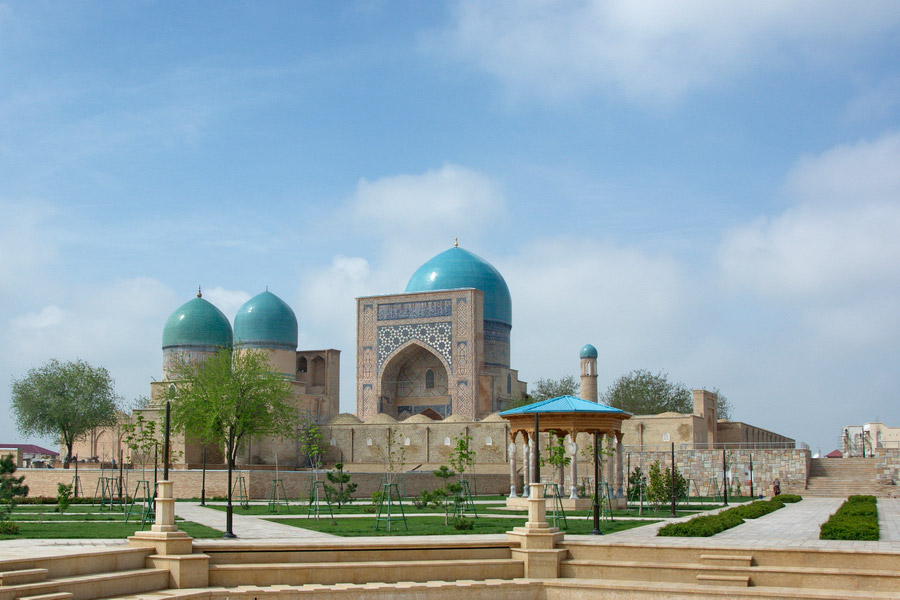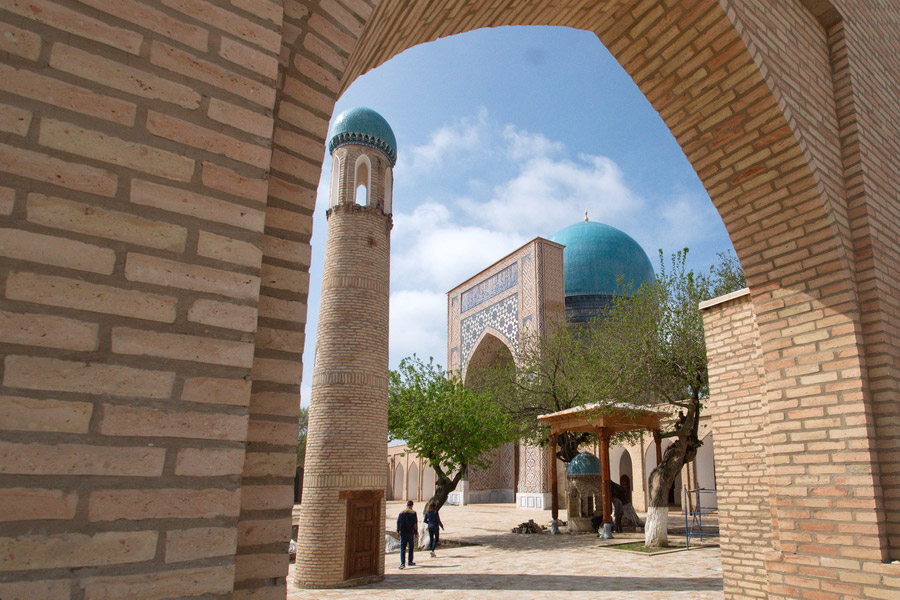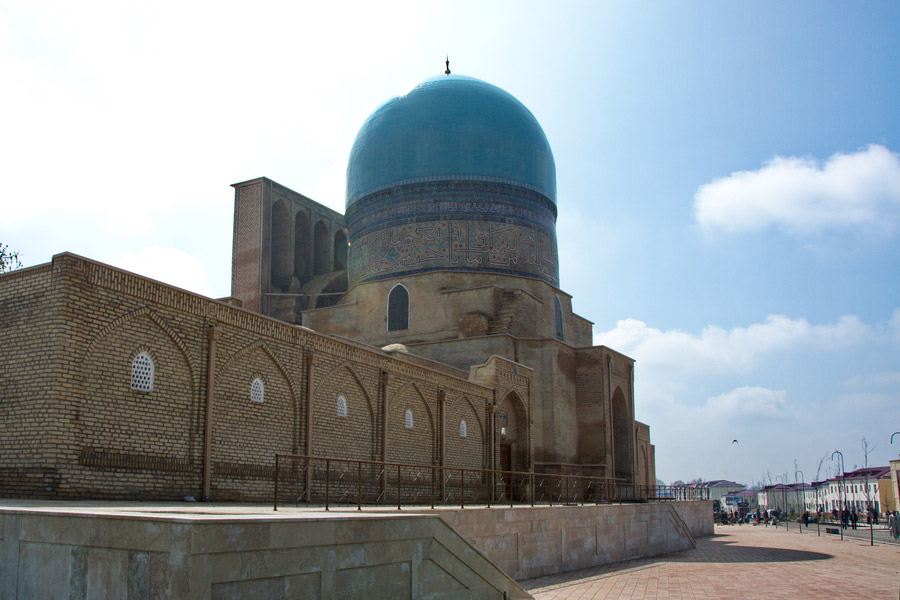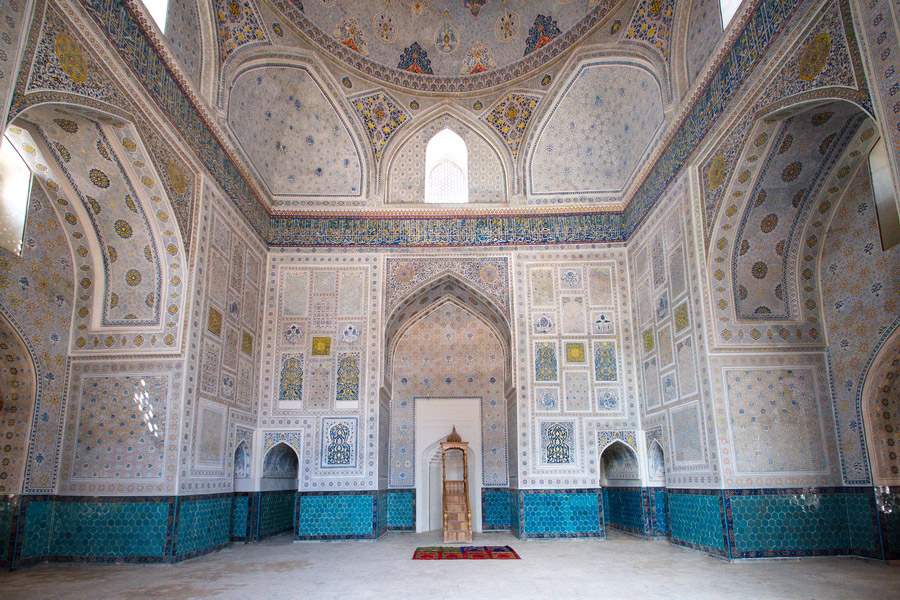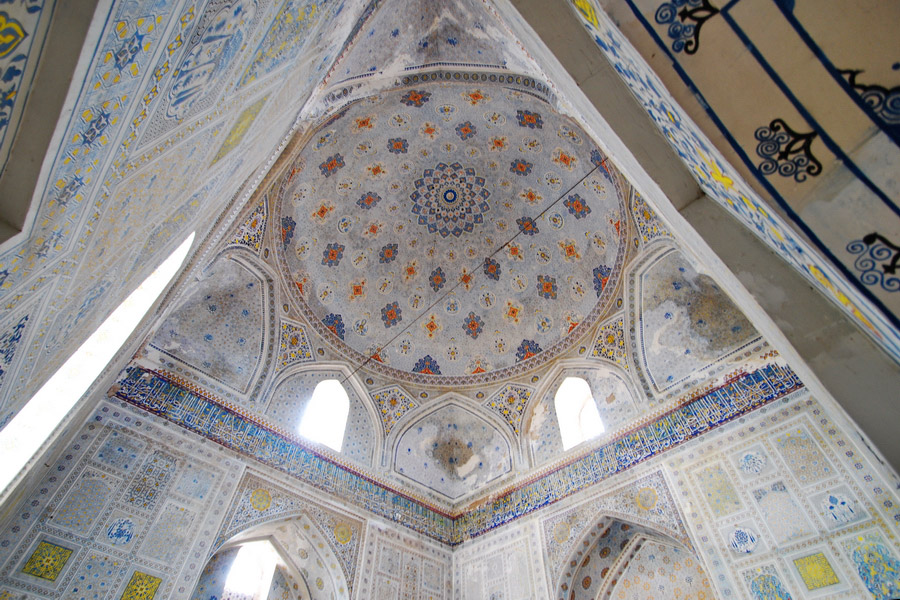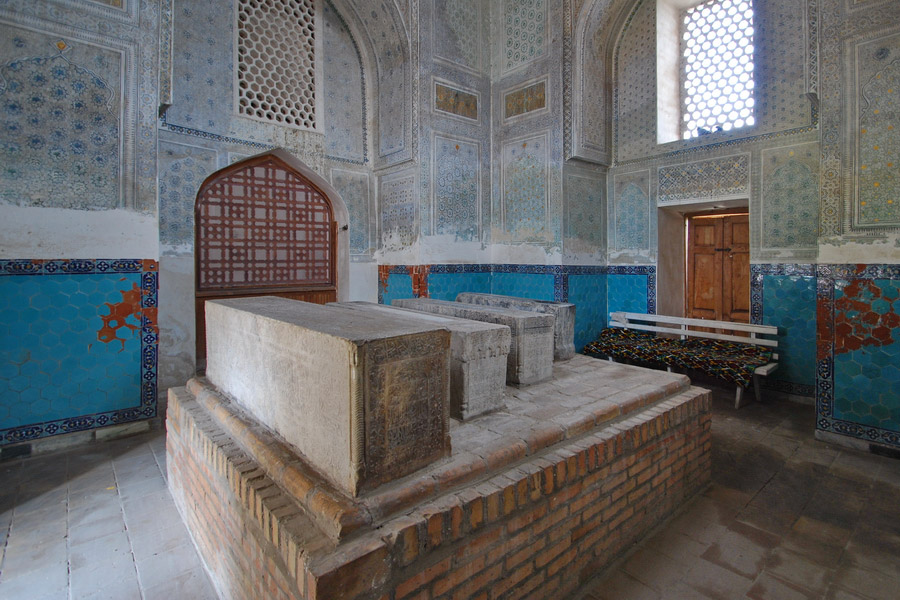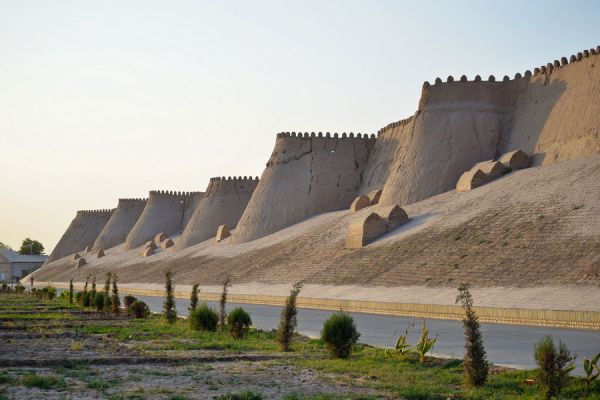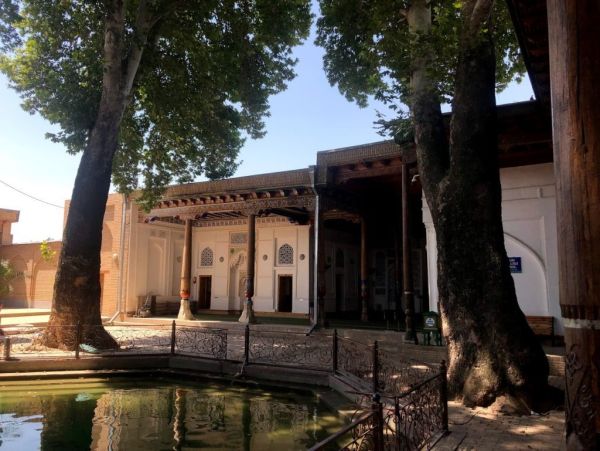Dorut-Tilovat Memorial Complex
To the southwest of the Dorus-Saodat ensemble, on the elevated part of Shakhrisabz, which was the core of the building of ancient Kesh, is the Dorut-Tillavat architectural complex. It began to form on the outskirts of the ancient ancestral Barlasov mazar, where Temur's father, Emir Taragai, who died in 1361, was buried. The ensemble consists of the mausoleums of Shamsiddin Kulol and Gumbazi Seyidon and the Kok-Gumbaz cathedral mosque. All the buildings of Dorut Tillawat are united by a vast courtyard stretching from north to south.
Dorut Tillawat began to be built up after the death in 1370 of a prominent religious figure of his time, Sufi Shamsiddin Kulol. During his lifetime, he enjoyed tremendous authority in matters of theology, was an example of a modest lifestyle, and earned his living by the craft of a potter. Sheikh Shamsiddin was the spiritual mentor of Emir Taragai and Temur himself, who greatly appreciated the elder's scholarship and listened to his advice. His disciple Bahauddin Naqshbandi became the founder of the Naqshbandi Sufi order. The grave of Shamsiddin Kulol immediately became a holy place of worship.
On the instructions of Amir Temur, the tomb of the great sheikh was lined with black marble slabs, and a domed mausoleum was built nearby on the remains of an ancient mosque, where the ashes of Emir Taragai were transferred in 1373. To the north of the mausoleum, the Dorut Tillawat madrasah was built, where they taught theology and the Koran, and memorial prayers were constantly recited. Later, the entire architectural complex was named Dorut-Tillawat.
During the reign of Sohibkiron's grandson, Mirza Ulugbek, a mausoleum with a dome was erected over the burial of Saint Shamsiddin Kulol. During archaeological research, the double walls of the mausoleum were discovered, which confirmed the indication in historical sources that the building of the X-XII century served as the basis for the tomb of Shamsiddin Kulol.
The portal of the mausoleum is decorated with mosaic tiles. The entrance to it leads through an ancient carved door. The ceiling of the gurkhana was supported by two carved columns. Almost in the center of the burial chamber is a modest sagana of the saint.
For almost seven hundred years, Shakhrisabz residents have been honoring the memory of their famous countryman. Pilgrims from all over the world flock to his mazar. And few people know that nowadays in Shakhrisabz there lives a family of hereditary ceramicists-kulols Muzaffarovs, whom Shakhrisabz residents consider to be descendants of Saint Shamsiddin Kulol.
